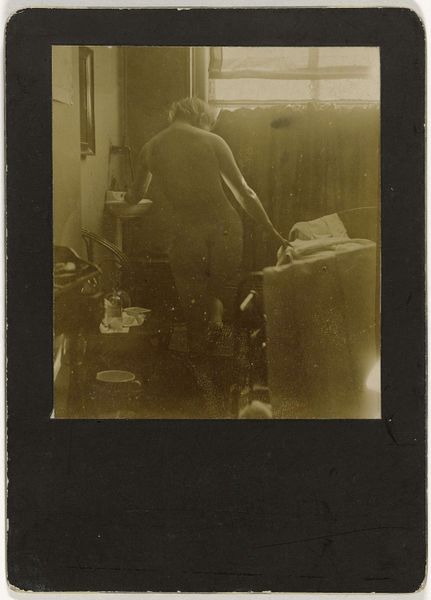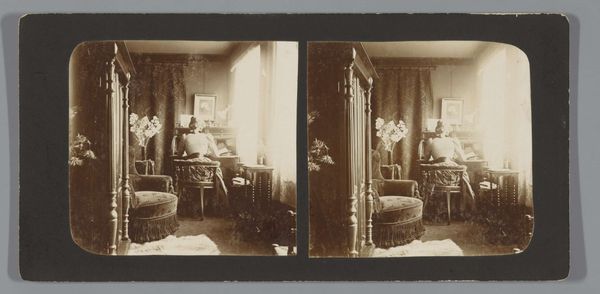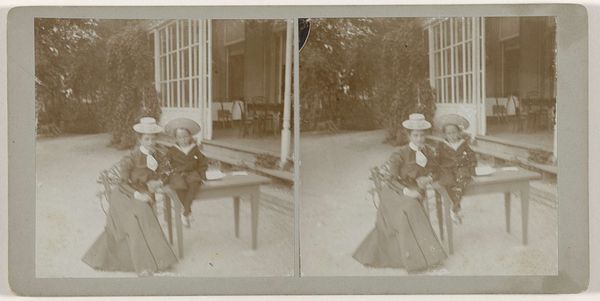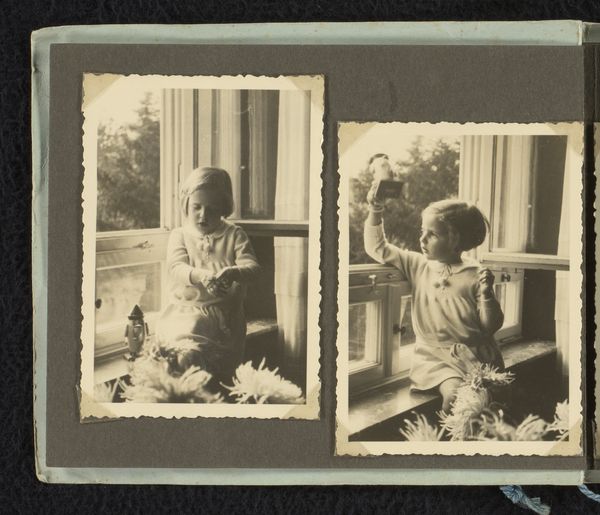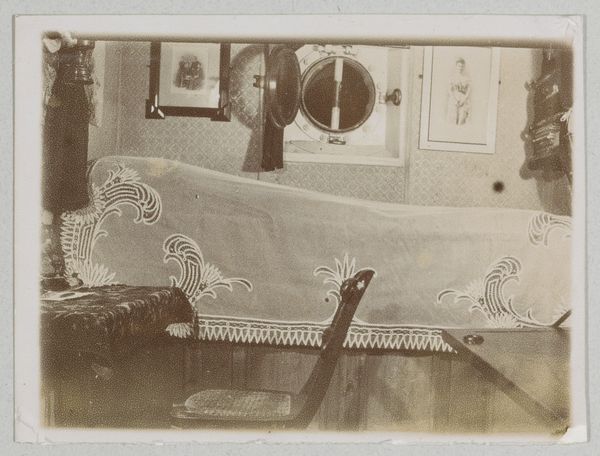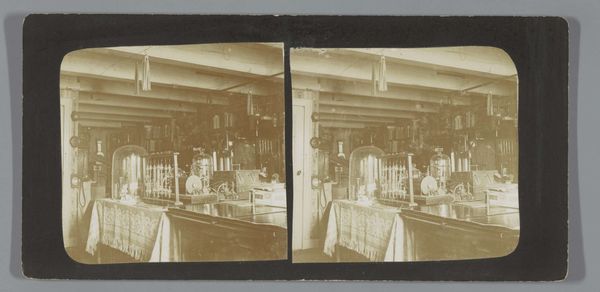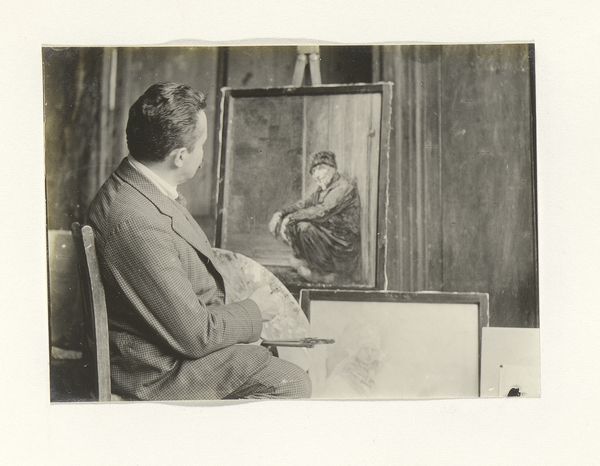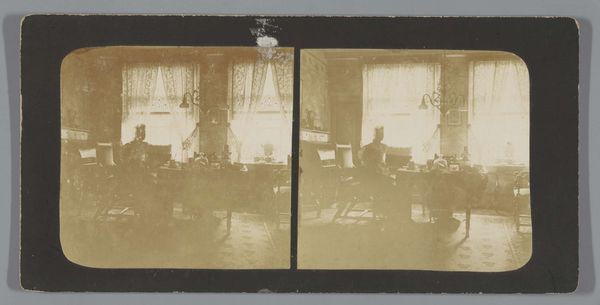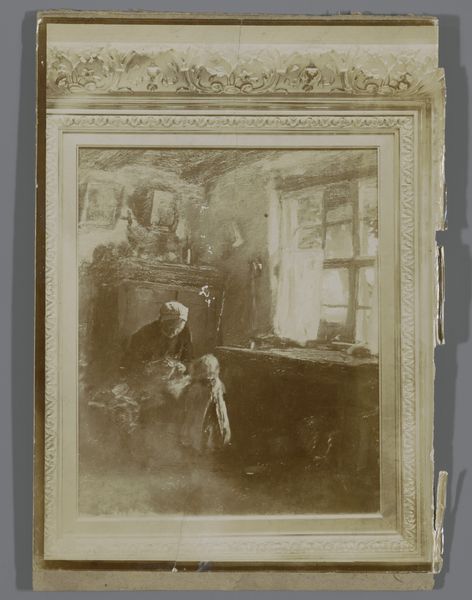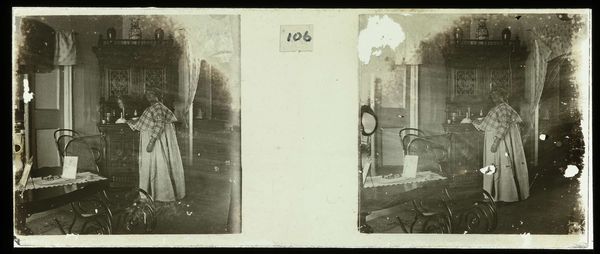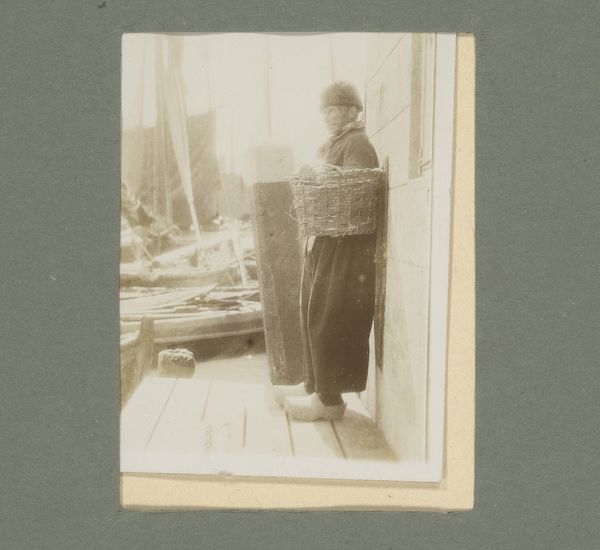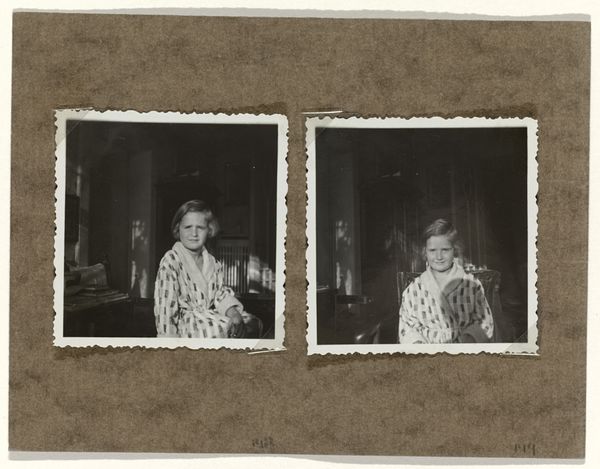
Cornelia Margaretha Scheltema Beduin achter een schildersezel in haar atelier, Singel 256, Amsterdam Possibly 1899
0:00
0:00
Dimensions: height 88 mm, width 180 mm
Copyright: Rijks Museum: Open Domain
Editor: This is a stereoscopic photograph titled "Cornelia Margaretha Scheltema Beduin achter een schildersezel in haar atelier, Singel 256, Amsterdam," thought to be from 1899. The sepia tones and intimate setting create such a feeling of quiet concentration. What strikes you most about this image? Curator: The photograph provides a rare glimpse into the professional life of a female artist in the late 19th century. The "atelier" itself—its location, decor, and accessibility—speaks volumes about Scheltema Beduin's social standing and the professional infrastructure available to women artists at that time. To your eye, does it evoke a sense of privilege or confinement? Editor: It's hard to say. It does look quite bourgeois but also isolated. The walls look bare. What would she be painting at the time? Do we know? Curator: Exactly! That is key. Think about what kinds of art were considered acceptable subjects for female artists. Landscapes and still life were common. Portraiture perhaps granted higher status, but maybe, with its emphasis on societal representation and expectations, was also seen as somewhat constricting. The presence of a second blank canvas prompts me to question its purpose within the domestic and studio environments she occupies. Do you find that an extension or rejection of societal expectations about women and art? Editor: I'm seeing it both ways, but her determination as a working woman is a strong vibe. So is the almost performative nature of the depiction, the idea that she is posing for this photo in her studio, which complicates my perception of the scene. Curator: Precisely. The "staging" adds another layer. It speaks to the way female artists navigated the male-dominated art world, actively shaping their image and controlling their narrative. Editor: I see it now; it's a visual document that embodies many layers of the artistic life. It makes me rethink the context in which art is made. Thanks!
Comments
No comments
Be the first to comment and join the conversation on the ultimate creative platform.
